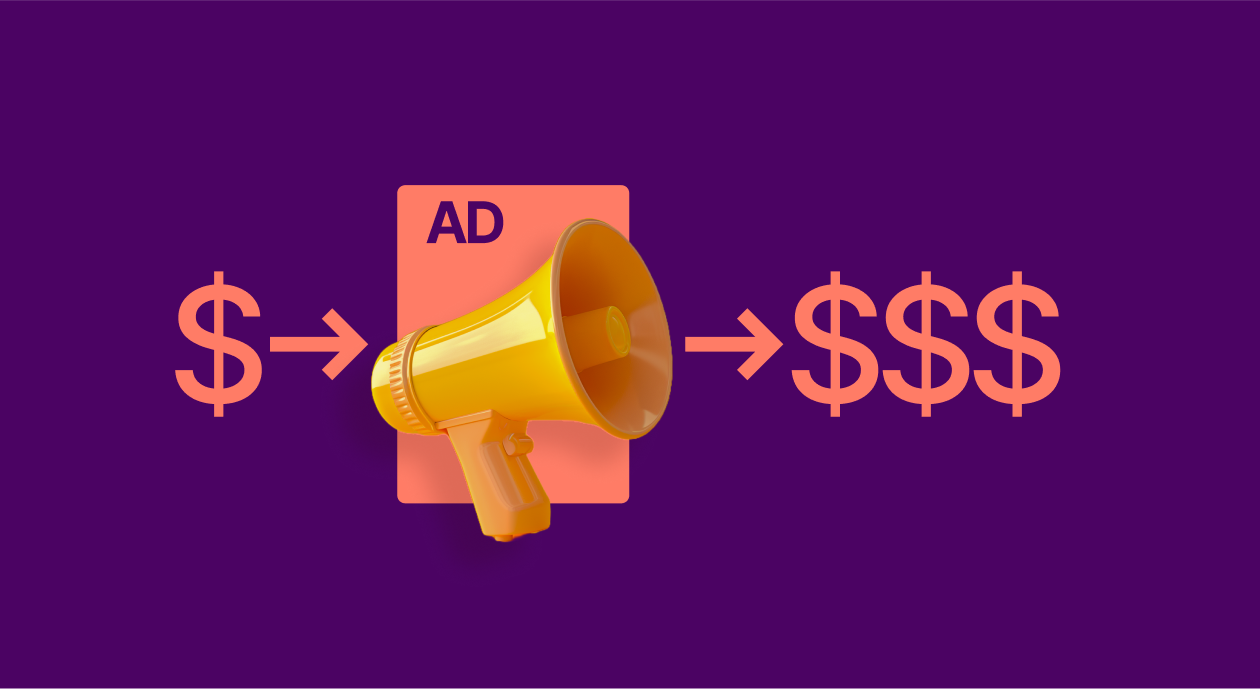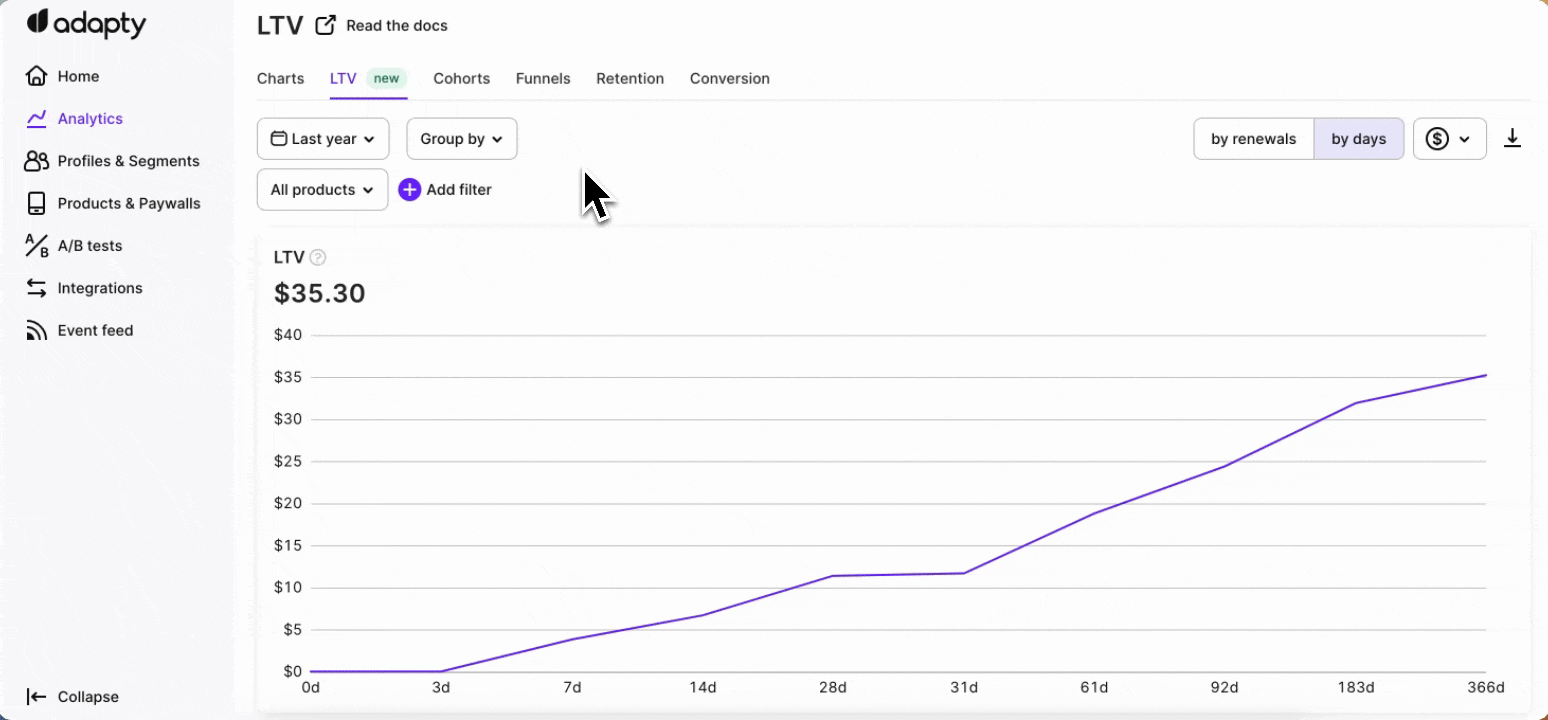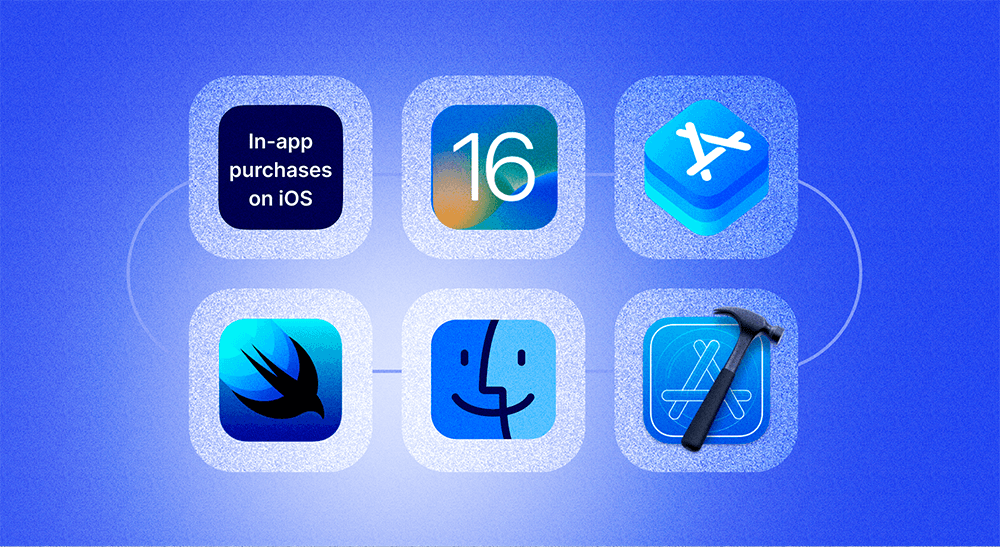Calculating return on ad spend (ROAS) metrics

February 15, 2024
16 min read

When it comes to acquiring new users for mobile apps, few channels work as well as advertising. Ads are one of the top app discovery methods. Because advertising is so effective at growing an app’s user base, it also takes up a significant share of the marketing budget. So knowing what you’re managing in returns for your ad spend is essential.
Enter ROAS. ROAS – or return on ad spend – tells you exactly what returns you make for every dollar you spend on ads. Analyzing ROAS shows you how to optimize your ad spend for higher returns. For example, if your Google Ads channel’s ROAS is higher than that for Facebook Ads, you may want to allocate more budget to Google Ads campaigns. Likewise, if you compare your ROAS metric for your different advertising campaigns, you can discover the most profitable ones. It’s also possible to calculate ROAS for special marketing advertising campaigns like the ones you’d run during seasonal marketing. When used correctly, ROAS is a clear KPI on your advertising channel.
So, let’s look at how you can calculate your app’s ROAS, what a good ROAS for a mobile app is, and ways to optimize ROAS so you can get higher returns for your ad spend. Here goes.
What is ROAS?
ROAS – short for return on ad spend – is an advertising metric that shows you how much revenue you generate from your ad channel. Simply put, ROAS calculates how many dollars you earn for every dollar you spend on advertising.
How to calculate return on ad spend (ROAS)
To calculate ROAS for an ad campaign, you need two points of data.
Your conversion value: This is the total revenue made from an ad campaign. If you ran an ad campaign for your paid app and got 500 sales, and if your app costs $10, your revenue becomes $5000.
Your ad spend: This is the amount you spend on running your ad campaign. Now, you can calculate your ad spend in two ways. You can either only consider the money you spent on ads (your ads budget) or factor in all the expenses you incurred for running your campaign. These expenses include everything, from the payments you made to your contractors (for copywriting or designing the ad creatives, for instance) or your employee salaries to any other expenses like consultation fees or overhead from tools’ subscriptions. For the sake of this calculation, let’s say you spent $1000 on your campaign.
Now using this data in the following formula for calculating ROAS gives this campaign’s ROAS:
ROAS = Revenue from ads/Cost of implementing those ads
In this example, your ROAS becomes $5000/$1000, which is 5:1. Generally you use a ratio of express ROAS. But you can also use a multiplier or percentage to express it. In this case, your ROAS could be expressed as 5x or 500% too. You could also simply say your ROAS is 5.
What’s a good ROAS for a mobile app?
While there’s no industry standard for a good, profitable ROAS, generally, 4:1 is considered good. That said, it’s not uncommon for businesses that are only starting with advertising to end up with negative ROAS and lose money. Unless you get ad experts onboard right from the start, it can be challenging to manage advertising profitably right from the go. Having experts on your team helps you navigate the complexities of advertising and ensure a positive ROAS right away. By yourself, it can take some time to reach a positive return on ad spend.
That said, you must try to break even as quickly as possible, because it’s only beyond breaking even that you’ll make any real profits from your advertising efforts. We’ll discuss break-even ROAS in detail in the next section. For now, however, keep the 4:1 rule of thumb for ROAS profitability in mind, and also remember that it can be unrealistic to expect this from your ad campaigns when you’re just starting.
Also, another thing to note is that ROAS varies significantly between different platforms, campaigns, and even regions. For example, if you run ad campaigns inside the App Store, Play Store, and Facebook, you’ll see that each platform returns a different ROAS.
ROAS values vary greatly even among different ad campaigns. That’s why you should look at both higher-level ROAS analyses and the more granular ones at the campaign level, drilling down to keywords, targeting, and ad creatives.
By looking at ROAS through so many lenses, you’ll see that, at the higher level, you have trends. For example, you can find that the App Store offers you better returns for the same ad spend than the Play Store. Or that you can entirely leave Facebook advertising as it bleeds money. Zooming in at the more granular levels, on the other hand, shows you what keywords, targeting strategies, and ad creatives are doing well and pinpoints areas for improvement and maximizing your return on advertising spend.
Also, sometimes, you may have low ROAS yet high profits–for example, you pay more to acquire a user through ads, but because you’ve got a subscription app, you make good revenue from the user over their entire subscription length. In such cases, it is essential to consider the lifetime value of a customer rather than solely focusing on the immediate return on advertising spend.
Break-even ROAS for mobile apps: Do you break even with a 1:1 ROAS?
Hitting the break-even point for a marketing campaign means you’re not making any profit or loss.
Anything you make beyond the break-even point is profit, and that’s why break-even analysis is essential
for metrics such as ROAS.
In fact, your ROAS analysis should start by calculating your break-even ROAS scenario. Now, you might think that you’re breaking even if you’re managing $1000 in revenue for every $1000 you spend on ads.
You don’t seem to be losing any money, right?
In other words: You’re breaking even if you’re at 1:1 ROAS, right?
NO – you aren’t.
To find your break-even ROAS, you need to factor in your profit margin.
Here’s how.
So, let’s say you sell your app for $10, and it takes about $5 to power it for a single user. Here, you’re making $5 in profits with every conversion, making your average profit margin 50%. Average profit margin = (Average profit/average conversion value)*100.
Now, use your average profit margin to calculate your break-even ROAS:
Break-even ROAS = 1/average profit margin%
In this case:
Break-even ROAS = 1/50% = 2
So this campaign needs a ROAS of 2 or 2:1 or 200% to break even.
At break-even ROAS, your ad campaigns aren’t making you any money and aren’t losing it either. This is your minimal ROAS “target,” especially if you’ve got a brand-new app. If you get new users with break-even ROAS, you can use your user base to get more users. You get the drift.
Before we move on to see how you can improve your ROAS, let’s look at a few metrics that seem like ROAS but are different.
2024 subscription benchmarks and insights
Get your free copy of our latest subscription report to stay ahead in 2024.
ROAS vs. similar metrics
A lot of these metrics must actually be seen along with ROAS to get a comprehensive view of your returns from advertising.
ROAS vs. ROI
ROAS is an “advertising” metric that tells you how many dollars you make for every dollar of your ad spend. ROI, on the other hand, is a much broader metric that measures the overall profitability of an investment. If you think of ROAS as ROI, then for calculating your ad spend for ROAS, you’d need to factor in all the costs and any overhead that might have gone into all the advertising. Both metrics express returns but with different perspectives. Read ROAS vs. ROI for more.
ROAS vs. CTR
Your click-through rate (CTR) measures how compelling your ad copy/creative is and how well it matches the users’ keywords (for search ads). ROAS, on the other hand, is a financial metric. A high CTR but low ROAS might indicate that while your ad works, your listing or things like pricing probably need to be revised.
ROAS vs. ACOS
Advertising Cost of Sale (ACOS) is a metric from platforms like Amazon. It focuses on showing the cost of advertising relative to the sales generated, unlike ROAS, which shows the returns from ad spending. So, if you have a high ACOS, your advertising cost outweighs the revenue generated from your ads. In contrast, you want a high ROAS, meaning your returns are much higher than your spending.
ROAS vs. CAC
CAC accounts for all the expenses incurred in getting a new customer, from marketing and sales costs to any additional overhead. CAC shows you how much investment it takes you to acquire a user. ROAS, on the other hand, only measures the returns from advertising spend. As you can tell, CAC provides a broader perspective on customer acquisition costs across various marketing channels.
ROAS vs. eCPA
Effective Cost Per Acquisition (eCPA) measures the cost to acquire a customer or lead, while ROAS measures revenue generated from ad spend. eCPA measures your overall lead acquisition costs, whereas ROAS only shows you the revenue generated from your advertising spend. Note: CAC and eCPA are similar, but CAC deals with the costs of acquiring paying users, whereas eCPA is about the costs of gaining leads. For example, if you have an app with a free trial, users who download and start the trial are accounted for in eCPA. Once trial users make their first subscription payment, CAC comes into play.
Why tying ROAS to its long-term impact is important (and how to do it)
ROAS analysis doesn’t end with calculating your ROAS metric alone. Because, by its nature, ROAS is a short-term metric.
Here’s an example.
Let’s say you have a subscription app, and you run an Apple Search Ads campaign as part of your holiday marketing, and you’re hitting break even with it.
Now, on the face of it, the campaign is OK because you’re breaking even.
However, what if you realize that most users you obtained through the campaign abandoned your app right after the first subscription term? In this case, you only broke even, and any revenue you may have projected from it didn’t really happen. This underlines the limitation of relying solely on ROAS as a performance indicator for ad campaigns. You completely miss the customer retention aspect here. For a complete understanding of a campaign’s performance, it’s essential to look at metrics like CLV and churn rate.
Alternatively, if the users you acquired as part of the campaign actually turned out to be loyal and went on to have a great CLV, then the campaign is a lot more successful than just a campaign that broke even.
Again, it would help if you looked beyond an ad campaign’s immediate returns to get these insights and plan even more sustainable campaigns in the long term.
So, ROAS doesn’t mean much as it is?
It does.
ROAS immediately tells you if your campaign is resonating with your users. So you can finetune your ad campaign strategy and optimize your future ad campaigns. You can use ROAS to improve every aspect of your advertising, from targeting and keywords to ad creatives.
However, studying its long-term impact, too, is crucial.
Enter Adapty.
With Adapty, you can see how your advertising campaigns are actually doing, not just in the short term but also in the long term. Just use Adapty’s LTV reporting and filter by attribution:

Adapty also offers out-of-the-box reporting on all the crucial metrics like CAC, CLV, and others that you need along with ROAS to fully review your advertising channel’s effectiveness.
Let’s now look at three sure ways to improve your ROAS.
Three ways to improve ROAS
Competitive analysis
One of the best ways to improve your ROAS, especially when just starting, is to see how your top competitors approach advertising. So, invest in competitive research. See what your competitors are doing in terms of ads. Study the keywords their ads appear for and also their ad copy. See how their ad copy matches with their app listing. Also, review their ad placements and formats. Competitive analysis can pinpoint things you can immediately apply to your ad campaigns and get a better ROAS. But be ethical while you do all this – clicks cost!
Experimentation
Another way to improve your ROAS is to add experimentation to your advertising. You can experiment with everything from your app listing and ad creatives to your pricing. For example, if you see that you’ve got a high click-through rate but a low ROAS, something isn’t working on the listing page. It might be pricing?
Optimization (keeping the bigger picture in view)
Here are a few questions: Are your keywords too broad? Are you losing money to irrelevant clicks? Are your ad creatives compelling? Are you targeting the right audiences? Your advertising metrics, like your click-through rate and conversions, will help you answer this. This also highlights why you shouldn’t only look at ROAS when analyzing your advertising channel. These metrics are closely tied to ROAS and must be seen when investigating ROAS.
Wrapping it up…
If you use advertising to grow your mobile app, ROAS analysis is central to maximizing your ad spend’s returns. Start by analyzing your advertising channels for their ROAS metrics. Next, follow up with granular analysis at the campaign, creative, or keyword level.
Also, while there are no benchmarks when it comes to ROAS, ideally, you should have a positive ROAS – or at least be at break even. Improving ROAS means generating more revenue from the same ad spend. While monitoring ROAS helps with this, remember to look at the bigger picture. For example, while ROAS will immediately tell you how much revenue a specific ad campaign made you, you still need to know how the users you acquired through it behaved in the long term. Looking at their CLV can give these insights.
Consider adding Adapty to your mobile app analytics mix. With Adapty, tying short-term metrics like ROAS to long-term metrics like CLV gets really simplified. Check out Adapty.
Recommended posts






